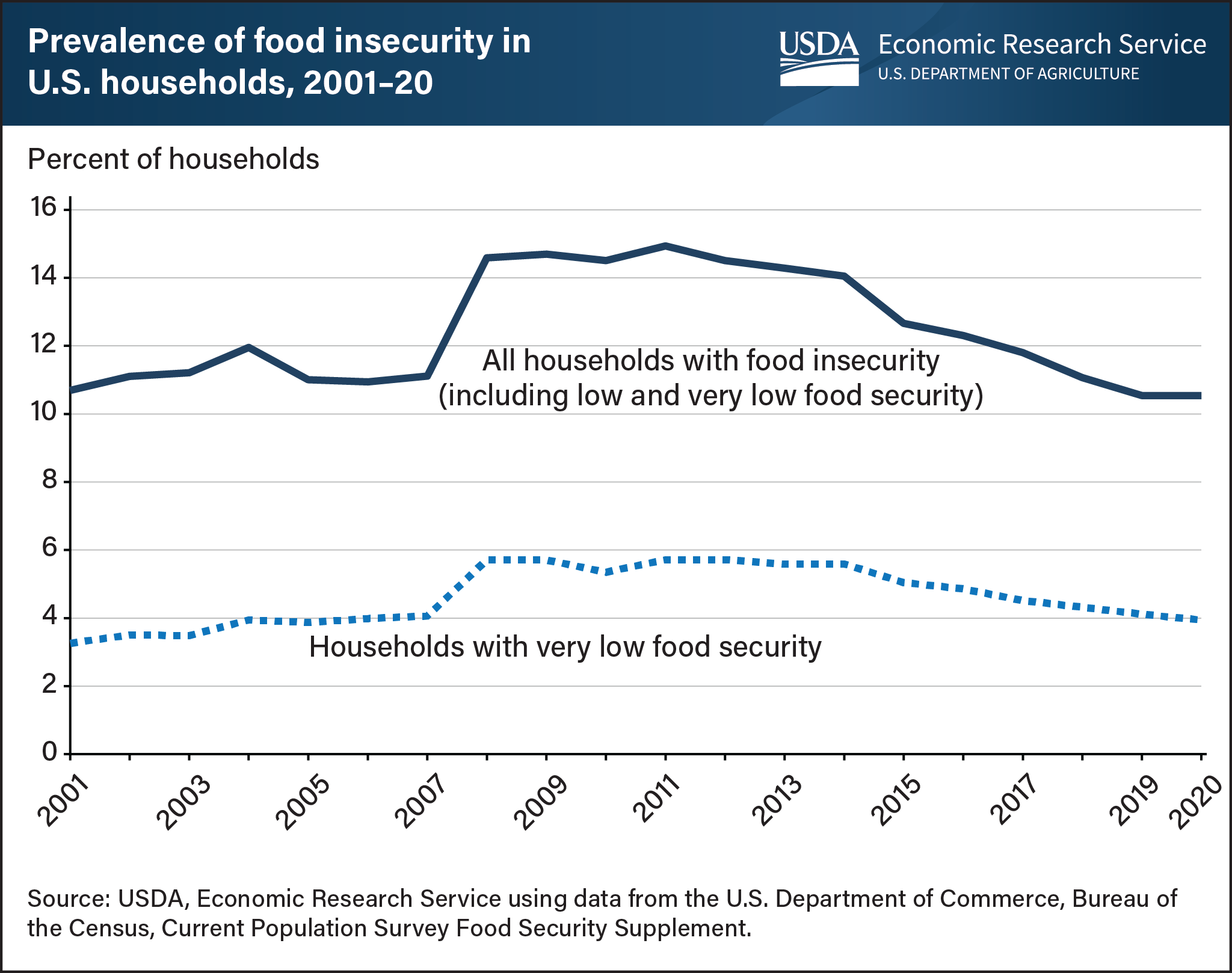U.S. household food insecurity remained unchanged in 2020
- by Alisha Coleman-Jensen
- 10/12/2021

In 2020, 10.5 percent of U.S. households were food insecure at least some time during the year, meaning they had difficulty providing enough food for all their members because of a lack of resources. That prevalence of food insecurity was unchanged from 2019, according to the USDA’s Economic Research Service (ERS), which monitors the food security status of households in the United States through an annual nationwide survey. Of the 10.5 percent of households that were food insecure, 3.9 percent experienced very low food security, not significantly different from 4.1 percent in 2019. In households with very low food security, the food intake of one or more household members is reduced and their eating patterns are disrupted at times because the household lacks money and other resources for obtaining food. The Coronavirus (COVID-19) pandemic began in the United States in 2020 and affected public health and the economy. Policy makers modified existing nutrition assistance programs and created new programs, and charitable organizations provided additional aid. Research studies conducted before the pandemic have shown that such increases can reduce food insecurity. This chart appears in the ERS report, Household Food Security in the United States in 2020, released September 8, 2021.

